The maakashikeyo (Pandanus odoratissimus) is one of the most significant coastal trees in the Maldives. Known in English as pandanus, screw pine, or screw palm, it is not a true pine or palm but a unique tree with a remarkable role in Maldivian culture, ecology, and daily life. Found mainly along sandy coastlines, the maakashikeyo has supported island communities for centuries — providing food, materials, protection, and even a source of childhood play.
Although the number of pandanus trees has declined on many islands due to coastal development and modern changes, their cultural memory remains strong. In some places, such as Alif Alif Maalhos — proudly known as “Kashikeyo Island” — the tree is still celebrated. The Maalhos Island Council logo even features the fruit of the maakashikeyo, representing identity, resilience, and tradition.
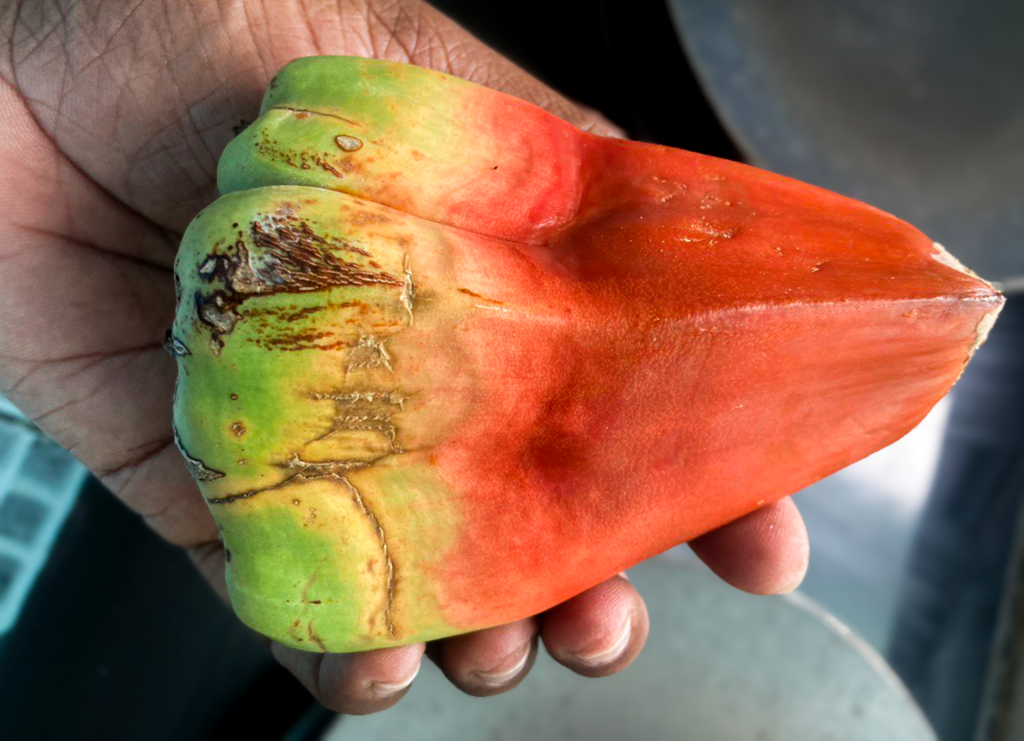
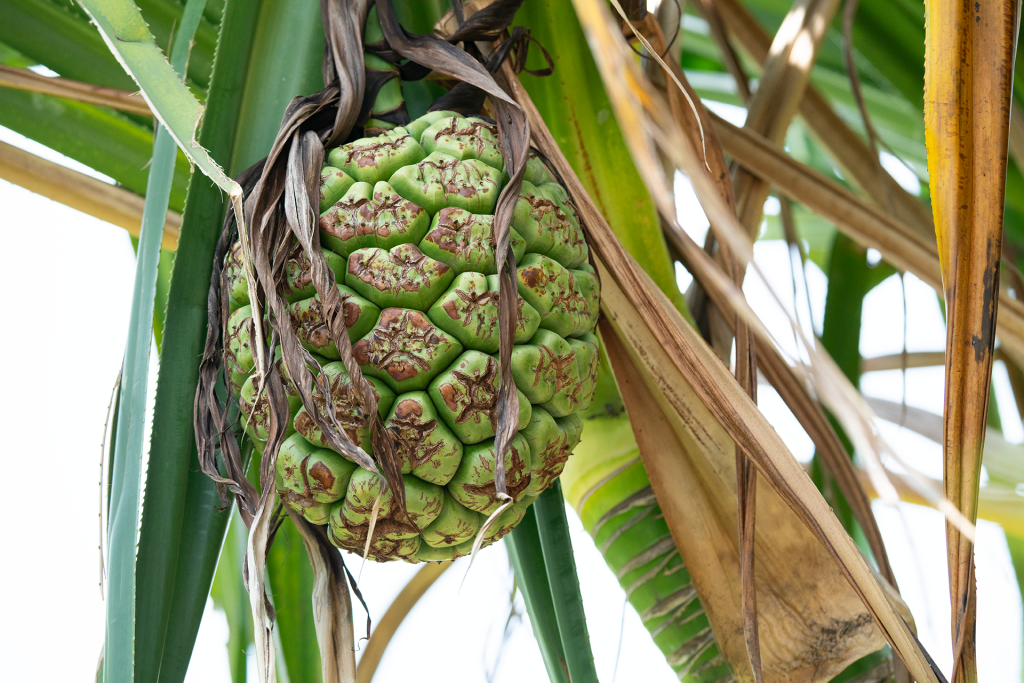
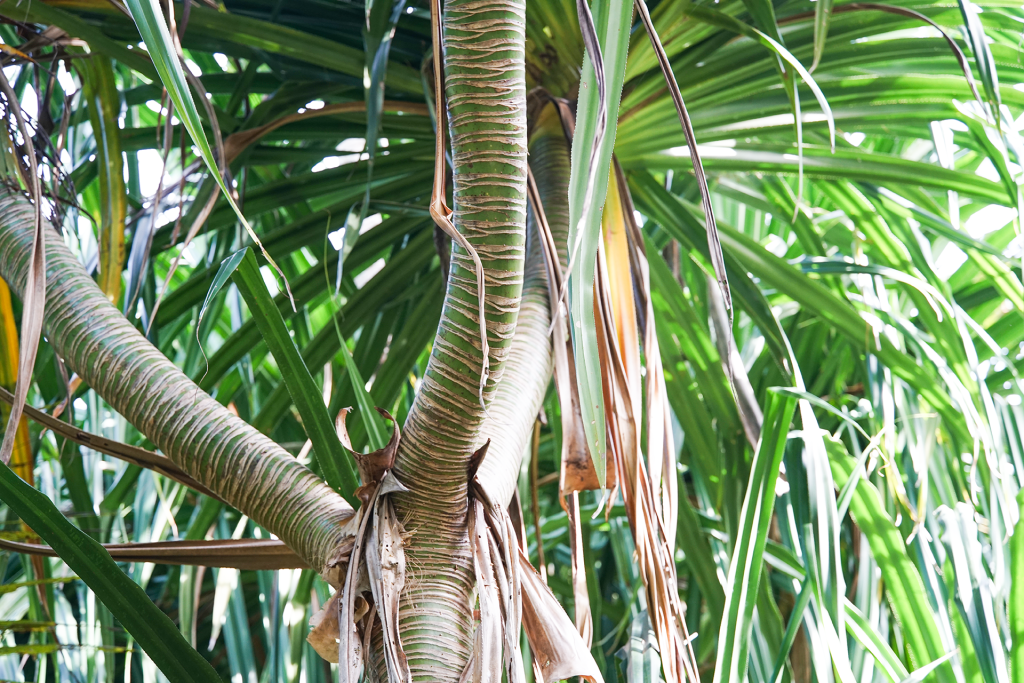
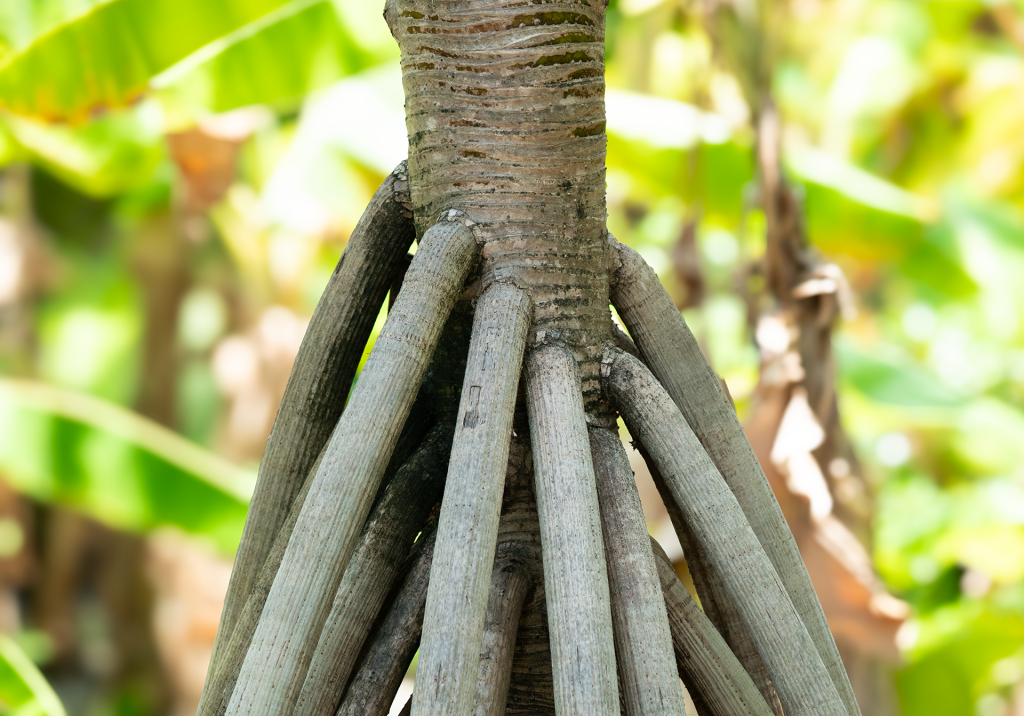
Scientific Classification
- Scientific Name: Pandanus odoratissimus L.f.
- Family: Pandanaceae
- Synonym: Pandanus leucanthus
- Common Names: Pandanus, screw pine, screw palm
- Dhivehi Name: Maakashikeyo
Pandanus Species in the Maldives
The Maldives is home to four pandanus species, each with its own place in local life:
- Maa Kashikeyo (Pandanus leucanthus) – The most widespread, central to Maldivian food, crafts, and traditions.
- Boa Kashikeyo (Pandanus laevis, Pandanus moschatus, Pandanus spurius) –Locally known and widespread across many Maldivian islands. Unlike maa kashikeyo (Pandanus odorifer), this species is not commonly eaten or used as food. However, in the past, especially during childhood, people sometimes ate the fruits occasionally, though not as a staple. The plant’s stem and other parts have been used at times for practical purposes, but it has never held the same cultural or culinary significance as maa kashikeyo.
- Reendhoo Kashikeyo (Malaysian pandanus) – Introduced from the Pacific; seeds were reportedly brought by former Agriculture Minister Abduhrasheed Hussain. Today it is one of the fastest-growing pandanus trees, found in both gardens and the wild.
- Medhu Kashikeyo (Pandanus tectorius ) – The rarest of the four. It is scarcely seen across the Maldives, unlike the other three which are more common.
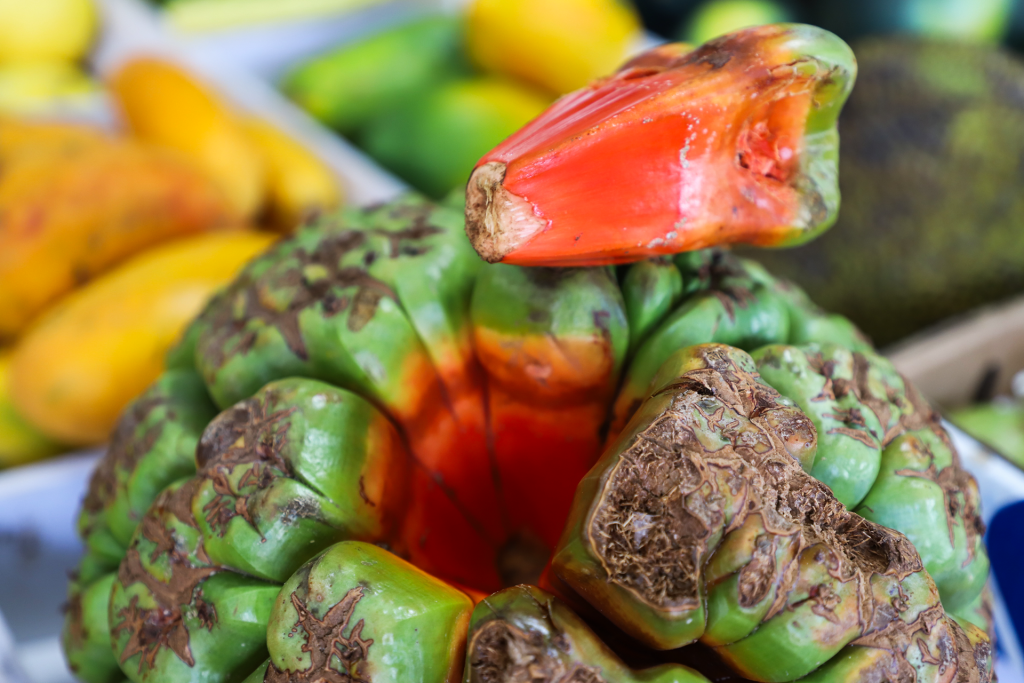
Maa Kashikeyo (Pandanus leucanthus)
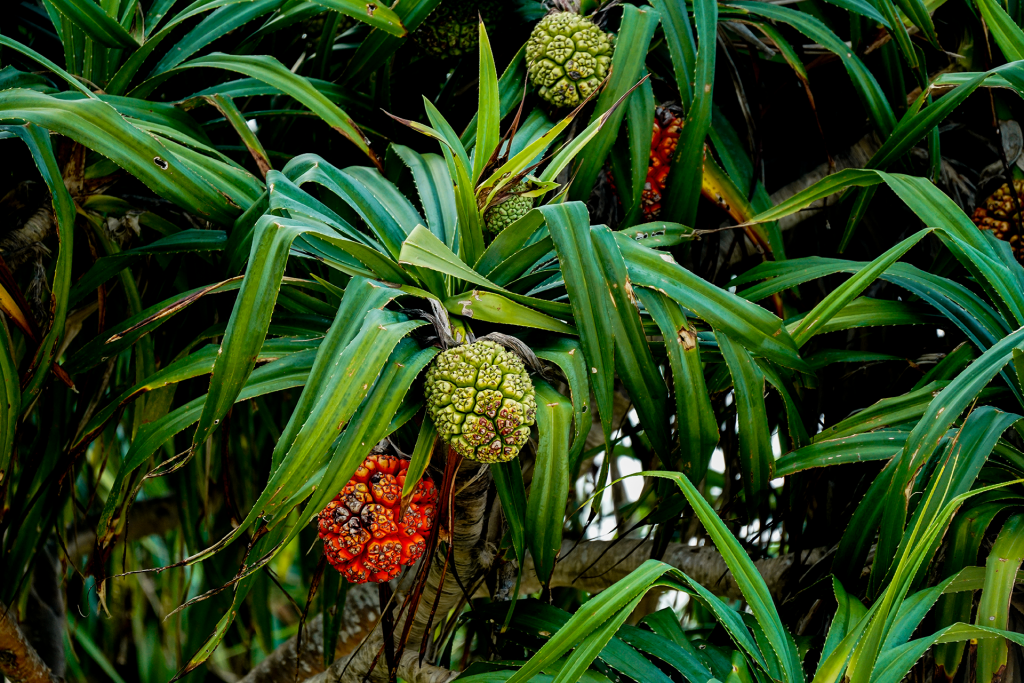
Boa Kashikeyo (Pandanus laevis, Pandanus moschatus, Pandanus spurius)
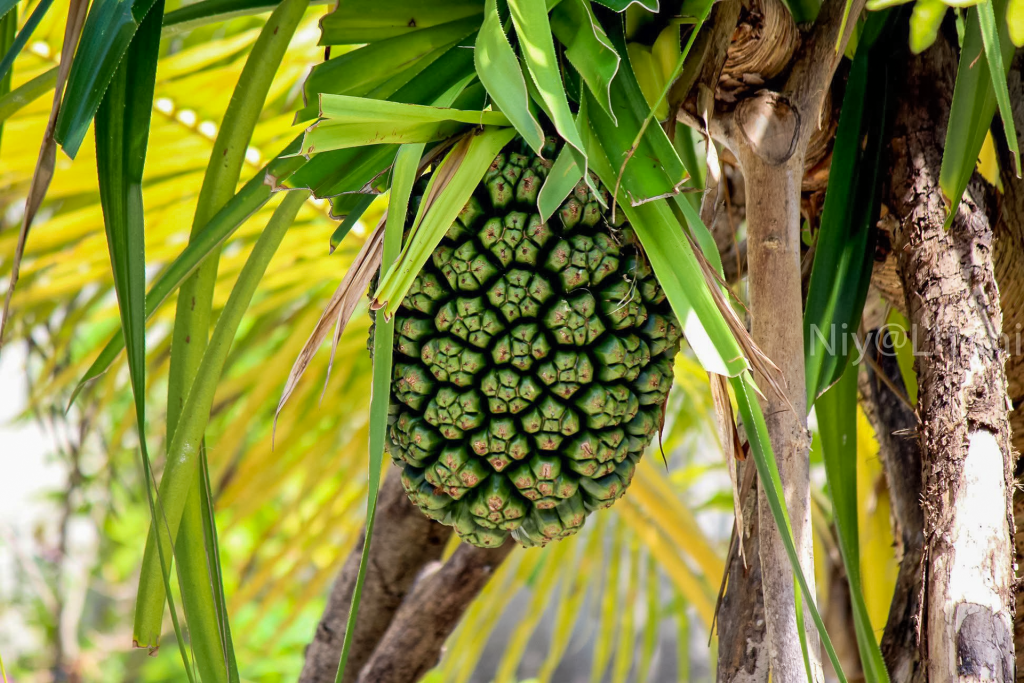
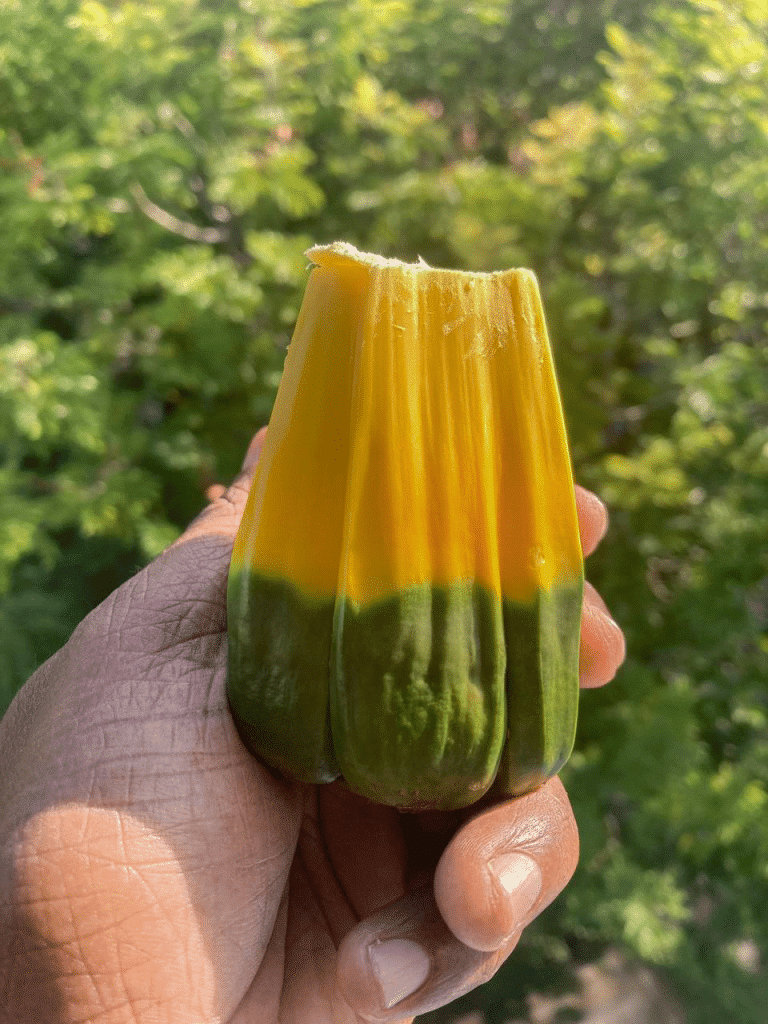
Reendhoo Kashikeyo (Malaysian pandanus)
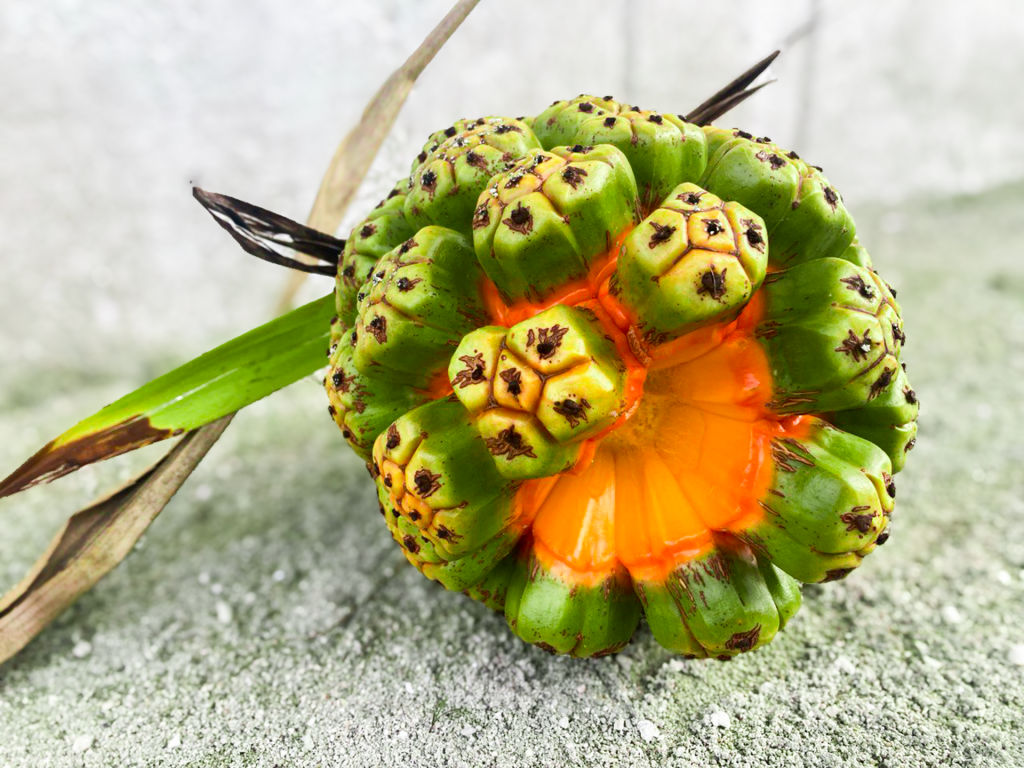
Medhu Kashikeyo (Pandanus tectorius )
Distribution in Noonu Atoll
In Noonu Atoll, three pandanus species — maa kashikeyo, boa kashikeyo, and reendhoo kashikeyo — are still present and used by island communities. Among them, boa kashikeyo is the most common and widely found, growing in many islands across the atoll. Maa kashikeyo, although once abundant, has declined and disappeared from several islands, making it less common today. Reendhoo kashikeyo is also well established and continues to spread rapidly. By contrast, medhu kashikeyo is rare throughout the Maldives and is only recorded in a few locations, including a population on Noonu Hulhudhoo (ހުޅުއްދޫ), an uninhabited island near Maavahdhoo. This makes Noonu Atoll one of the few places where medhu kashikeyo can still be found.
Across the Maldives, pandanus trees remain an important coastal resource, but their abundance varies. Boa kashikeyo is common in most atolls, reendhoo kashikeyo is spreading, maa kashikeyo has been lost from many islands, and medhu kashikeyo is the rarest of all.
Botanical Description
The maakashikeyo is a medium-to-large evergreen tree that can grow up to 15 meters tall.
Roots
- Prop roots (aloho): Thick, woody roots that extend outward from the base of the trunk, anchoring the tree securely in sandy soil. These roots give the tree a unique stilt-like appearance and allow it to withstand strong winds, waves, and coastal erosion.
- Ecological role: The roots stabilize fragile beaches and dunes.
- Traditional use: Prop roots were cut and shaped into fihi boat brushes, durable tools used by fishermen to clean and paint boats.
Stem
- The stem is hollow, fibrous, and light, with pale buff to grey-brown coloring.
- It bears distinct leaf scars that form rings around the trunk.
- While not strong enough for heavy construction, the stems were used in hulhuashi platforms — shaded resting places built near beaches — and in light repair work.
Leaves
- Arranged spirally at branch tips.
- 1–2 meters long, 4–7 cm wide, sword-shaped, with a distinctive drooping midrib.
- Margins and midribs are lined with sharp prickles, pointing downward near the base and forward near the tip.
- Traditional use:
- After removing prickles, leaves are dried and woven into mats (santhi).
- Leaves are also used in thatching, ropes, and other household items.
- In childhood traditions, leaves were folded and cut into shapes of boats, birds, and animals — toys that carried cultural memory.
Flowers
- Dioecious species: male and female flowers grow on separate trees.
- Male flowers: Tiny, white, and fragrant, borne in clusters with large bracts. They are short-lived, lasting just one day.
- Female flowers: Compact heads resembling small pineapples, later developing into pandanus fruits.
Fruit
- A cluster of wedge-shaped drupes, ripening into orange, red, or vermilion colors.
- Each drupe contains:
- A fibrous edible lower layer.
- A buoyant upper layer with air spaces.
- A stony endocarp protecting the seed.
- Fruits are rich in beta-carotene and vitamin A, and are widely eaten by both people and wildlife.
Seeds
- Hard-shelled seeds adapted for dispersal by sea currents.
- This adaptation explains how pandanus colonized isolated islands across the Indian and Pacific Oceans.
Childhood Traditions and Toys
Before plastic and store-bought toys were common, Maldivian childhoods were deeply tied to creativity with natural materials. The maakashikeyo played an important role in this tradition.
- Children crafted their own toys using foam, wood, and natural materials from the beach.
- Fathers and elder brothers often used pandanus leaves to create miniature boats, birds, and figures, passing skills from one generation to the next.
- These toys were not just for play — they connected children to their environment, teaching resourcefulness and creativity.
- Making boats from pandanus leaves was especially popular, symbolizing the Maldives’ deep bond with the sea.
Today’s generation, surrounded by mass-produced plastic toys, rarely experiences this tradition. The art of crafting with pandanus leaves is fading, leaving behind memories cherished by older generations who grew up with simpler but imaginative forms of play.
Culinary Uses
The pandanus fruit has been a staple during food shortages and continues to be enjoyed in both traditional and modern recipes:
- Raw fruit – Ripe drupes are eaten directly.
- Kashikeyo fani / Baipainkandhi – A sweet juice made by boiling fruit with sugar.
- Kashiko bondibaiy – Rice pudding flavored with pandanus.
- Kashiko baypen – A sweet soup.
- Kashiko foa / Kashikeyo aaros – Dessert made with pandanus, sugar, and wheat flour; sold in markets. (Process called kashikeyo hilun.)
- Modern dishes – Cakes, ice creams, and puddings that use pandanus fruit for a unique tropical flavor.
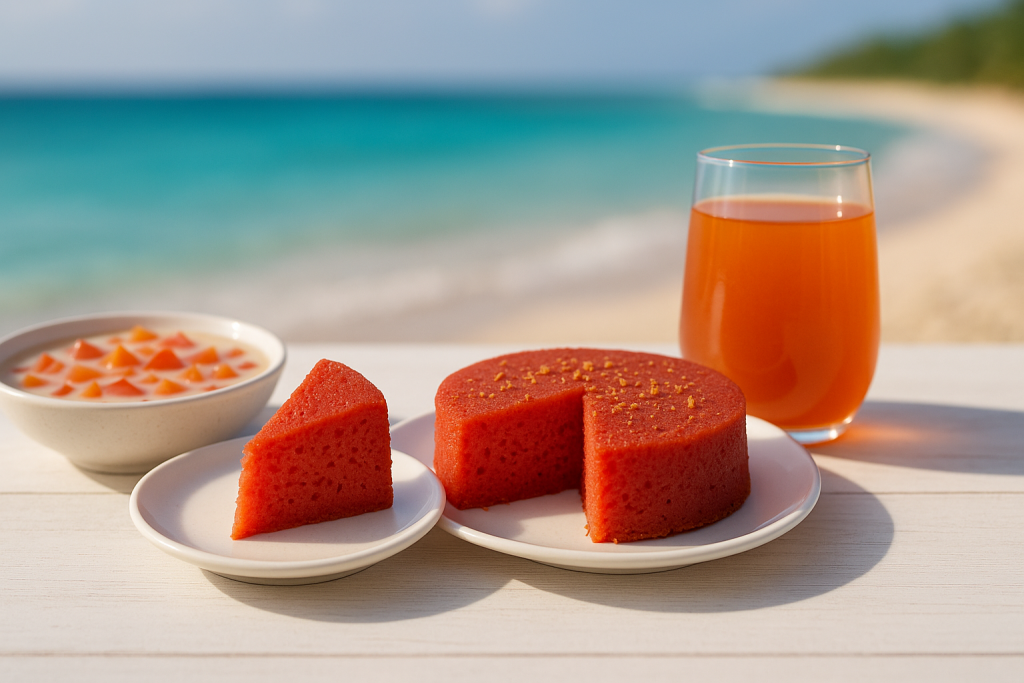
Kashikeyo fani | Kashikeyo Cake | Kashikeyo Kandhi
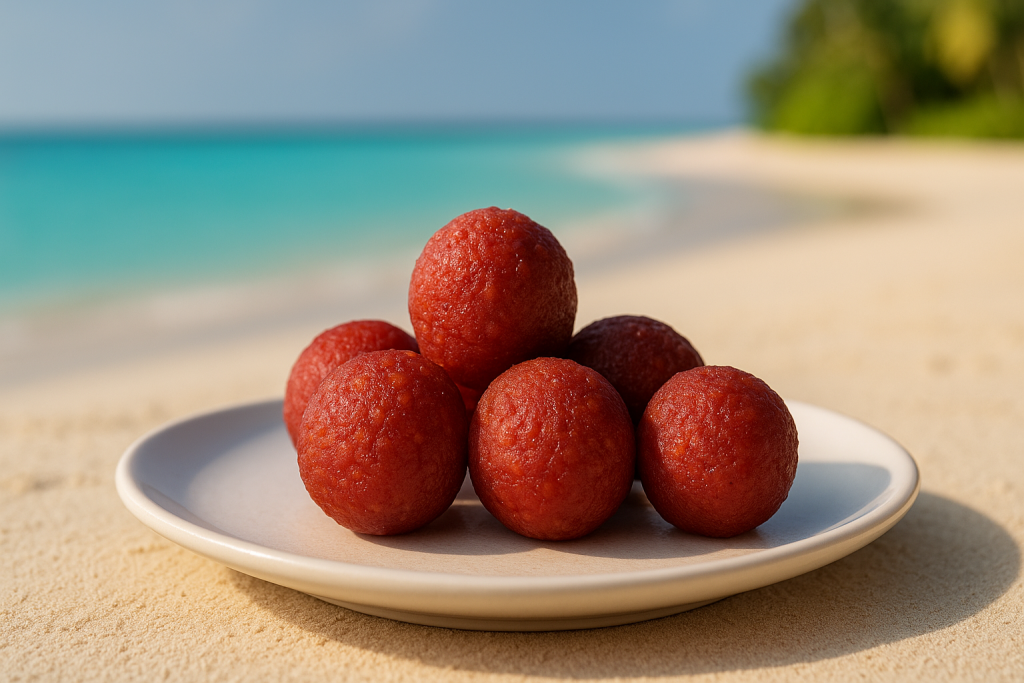
Kashiko foa / Kashikeyo aaros
Utilitarian Uses
Every part of the tree is useful:
- Leaves: Woven into mats (santhi), used in thatching, handicrafts, and ropes.
- Prop roots (aloho): Made into boat brushes for cleaning and painting.
- Stems: Used in lightweight construction and traditional hulhuashi platforms.
- Fibers: Made into ropes and other household tools.
- Cultural crafts: Children’s toys, ornaments, and small functional tools.
Cultural Significance
The maakashikeyo has been central to Maldivian life — as food, as material, and as part of island identity. Its uses shaped everyday routines, while its leaves and fruits inspired creativity in childhood games. Communities like Maalhos still embrace the pandanus as a symbol of resilience and culture, proving that this tree is more than just vegetation — it is a cultural anchor.
Environmental Role
The pandanus tree strengthens fragile island ecosystems:
- Erosion prevention – Prop roots bind sandy soils.
- Habitat – Provides shelter for crabs, birds, and insects.
- Food source – Fruits feed wildlife and enrich ecosystems.
- Coastal defense – Naturally resists storms, wind, and salt spray.
Conservation
Today, the pandanus tree remains widespread but faces decline in some islands. Protecting it is essential for both cultural memory and ecological stability.
- Maa Kashikeyo, boa Kashikeyo, and reendhoo kashikeyo remain common, especially in northern atolls like Noonu.
- Medhu kashikeyo is rare but survives in a few places, such as Noonu Hulhuhdhoo(ހުޅުއްދޫ), where it deserves special conservation attention.
- Replanting programs and sustainable harvesting can help preserve this versatile and iconic Maldivian tree.

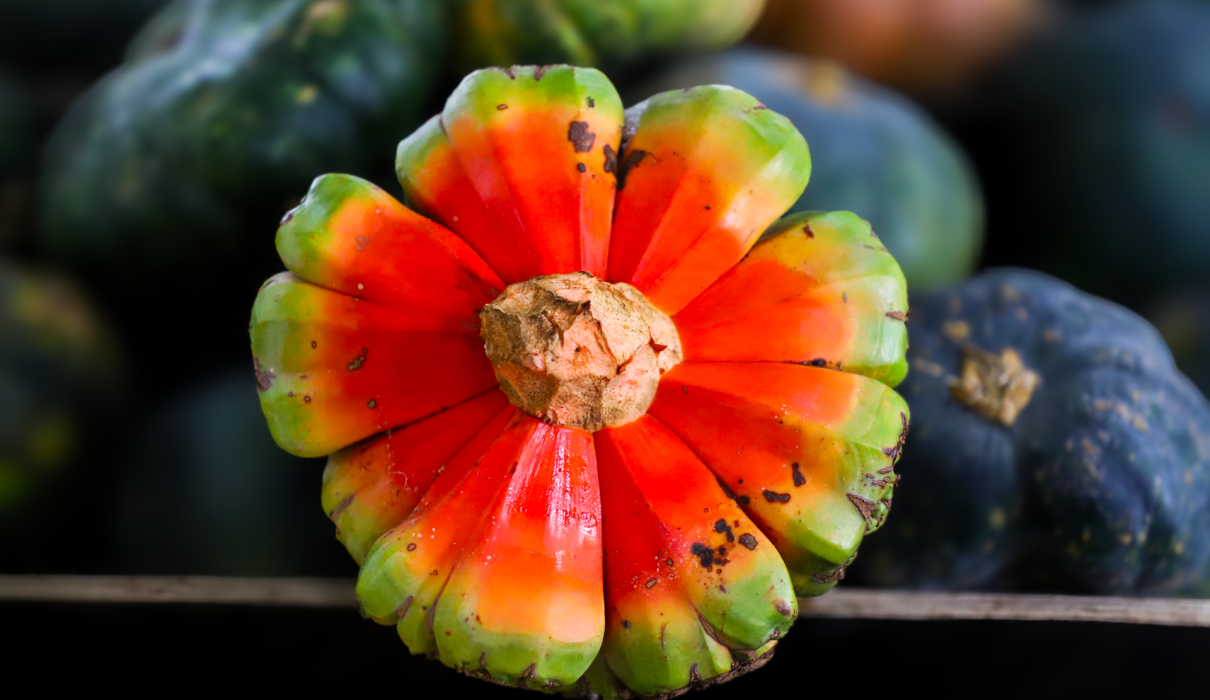
1 Comment